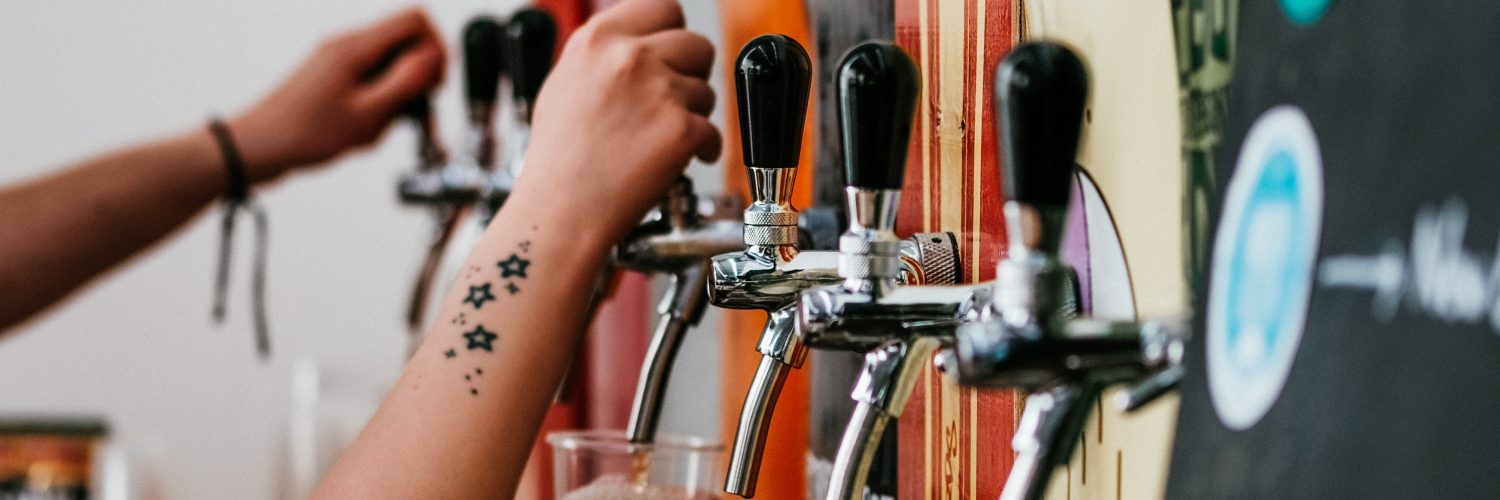It’s a hoppy time to be alive, especially if you occasionally treat yourself to a large pint of craft beer.
According to the Brewers Association, the craft beer industry saw a five percent increase in 2017 and the state of Arizona saw an increase of 49 craft breweries between 2013 and 2017.
“We’re a growing beer state,” said Rob Fullmer, executive director of the Arizona Craft Brewers Guild. “Arizonans have really tried to get unique Arizona grown ingredients into their products. So, there is something that we’re able to do here that you’re not able to do in many other places.”
With 96 craft breweries, Arizona ranks 19th in the country for the number of craft breweries statewide, making a total economic impact of $1 billion.
“There’s a lot of jobs that get made from the beer industry. It’s a huge, huge job maker” said Tristan White, Dragoon Brewing Company co-founder and manager.
“Brewers are manufacturers, retailers, distributors,” Fullmer said. “Delivery drivers, merchandisers. Then you think about the places with retail beer – whether they’re bars, restaurants, hotels – you can see how that adds up.”
Another part of the economy that craft beer impacts is the tourism industry.
“When people do travel, they want local products. They want to feel like they’re not in the same place they were,” Rob said. “I’ve been to Peru, but I go into the gift stores [there] and I see the same things I can see in a gift store here. Beer is an authentic product that has shelf life.”
Overall, tourism is up in Arizona with state lodging seeing a 6.4 percent increase in tourism-related gross sales from June 2017 to June 2018 according to the Arizona Office of Tourism (AOT).
“The emerging craft beer scene has definitely increased tourism by providing more unique dining and craft beer options,” said Arizona Wilderness Brewing Company co-owners Jonathan Buford and Patrick Ware. “[It] provides a niche market for consumers to explore. We truly incorporate Arizona in our food, beer and atmosphere allowing the guests to get the true feeling of Arizona when visiting from all over the world.”
According to Rob, business travelers who often do not have the opportunity to go to breweries will ask for Arizona products at their hotels, to a point where most hotels now specialize in local beers.
The AOT reported that restaurant/bar, retail and amusement gross sales experienced an average 6.07 percent increase from June 2017 to June 2018.
In Flagstaff, the local breweries have partnered with the Convention & Visitors Bureau and Flagstaff Visitor Center to create the Flagstaff Brewery Trail and encourage tourists to explore the town’s local beer scene.
The trail allows visitors to pick up a passport at the bureau or visitor center and then travel to all seven Flagstaff breweries, collecting a stamp at each even if they did not purchase anything. When they have all seven stamps, the visitor receives a souvenir pint glass.
“I hear from [tourists] that they always visit breweries in the cities they go to or that sometimes they go to cities that are known to have breweries,” Mother Road Brewing Company’s Operations Manager Oliver Adams said. “[The trail’s] an active effort to drive traffic to the city and highlight all of these awesome breweries we have.”
So, why an increase in the craft beer industry?
“Beer is something that far exceeds most other beverages,” Dennis Gable, brand manager, SanTan Brewing Company, said. “Beer has always been brewed for a very long time [but] it hasn’t always been quite like this. Now, we get to drink it at a very high quality and with ingredients that nobody ever dreamed of.”
The start of the industry’s growth can be partially attributed to Governor Doug Ducey signing what is known as the “Beer Bill” in 2015.
The bill allows brewers to produce a maximum of 200,000 barrels a year cumulatively across all their locations. Previously, brewers could only produce 40,000 barrels per year at each other locations.
Once that number was reached, a brewery would be labeled an “in-state-producer,” forcing them to divest itself of additional locations.
“[It] helped by eliminating a cap to our production, allowing us to brew a wide variety of styles and batch sizes,” Jonathan and Patrick said.
“It allowed smaller breweries that were getting larger to not have to worry about opening up outside retail outlets,” said Andy Ingram, Four Peaks Brewing Company co-founder and brewer. “Why punish someone for being successful?”
A companion piece to the bill allowed breweries under a microbrewery license to sell other brewery’s beer, this created collaboration between breweries and also allowed new breweries to open a space and sell other’s beer while waiting for federal permitting on their beer.
“[It] contributed to collaborations for fun reasons [and] for charitable reasons,” Rob said. “We have a women’s collaboration bureau. It [is] all women in the industry who wanted to network and wanted to raise money for women shelters.”
But more than anything, the state law changes put the industry on the map.
“It really kind of put beer in the media. It gave us something to talk about, to get people excited about,” Tristan said. “It put us on the map.”
“It also help[ed] establish the craft brewing community, and the guild in particular, as a real player down at the capitol,” Andy said.
Oliver attributes the growth to the recent “go local” movement.
“We’ve seen this eat local, local meats or local produce, local products, shop local,” he said. “There’s all this dialogue around local [things] and craft beer certainly falls into that [but] I think it started because there wasn’t a huge variety of beer.”
While Arizona is still a little behind in terms of the number of breweries, big players in other cities are noticing the growing industry.
Latitude 33, a brewery from San Diego, California, recently announced its plan to expand into Arizona.
“Arizona has some killer breweries and from my understanding is really starting to hit a new level of adoption,” said Latitude 33 CEO Mike Ingram. “Being our neighbor—also along the 33rd parallel—there seems to be a great deal of alignment between Southern California and Arizona customer preferences. We’re simply following demand.”
However, overwhelmingly all brewers said what drew them to brewing – besides the ability to drink beer for a job – is the inclusiveness of the industry.
“Your work is such a big part of your life and you should really enjoy what you do,” Oliver said. “Beer is one of those really, really special products to create and sell. It serves a really interesting purpose in society and in lives and in communities.”
“Everybody’s friendly, everybody kind of works together. It’s about drinking beer together and hanging out. It’s fun,” Tristan said.
“When you get people like-minded together, who are interested in creating things, whether it be creating something new or just creating something really delicious. That kind of creative energy is really magnetizing,” Dennis said.
And the inclusiveness of the industry extends to its customers.
“Craft breweries create a new sense of community that allows local consumers to seek a new venue that interests a wide variety of demographics,” Patrick and Jonathan said.
“Brew-pubs help bring communities together, they’re that third space that a lot of people are looking for. You have [your] home and work and then people have that third space; brew-pubs and breweries fill that role,” Andy said.
Arizona Beer Week will be back for its ninth year from Feb. 7 to 16
There will be more than 200 events across the state including the Arizona Strong Beer Festival on the 9th at Steele Indian School Park.
“Beer, even if it’s made in a factory, it’s a social beverage. It brings people out and I think we’re successful because we’re a growing state and I think people really want to connect,” Rob said. “Arizona beer does that.”
For a list of all the beer week events, click here.
















Add comment